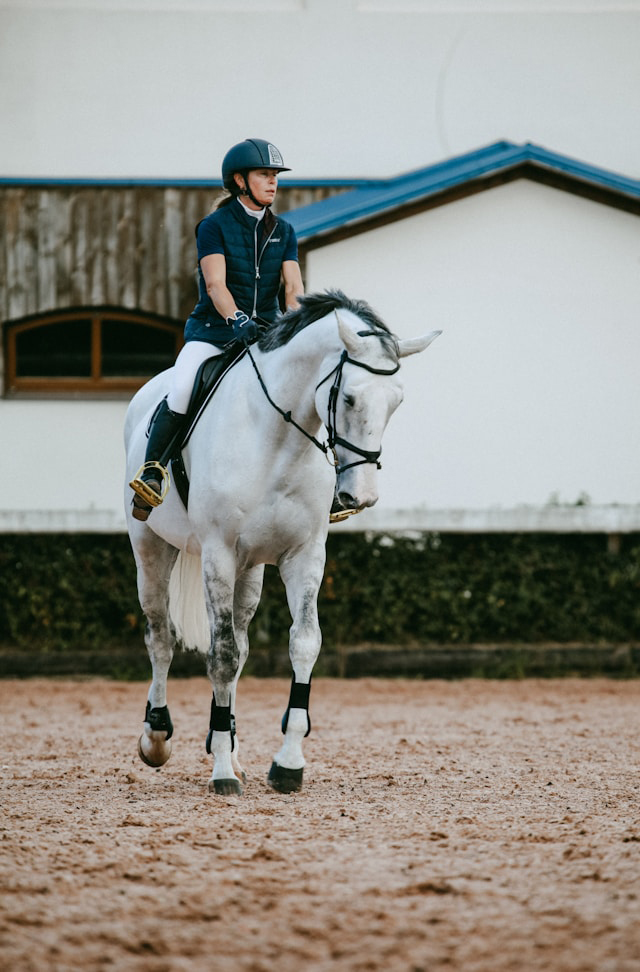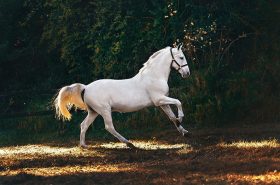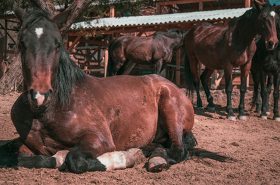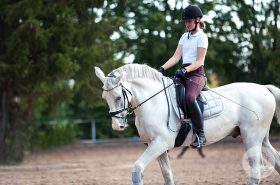Whether you’re schooling your horse alone or riding in a shared arena with others, following good arena etiquette is essential for safety, respect, and a positive experience for everyone. A well-mannered arena environment not only prevents accidents and miscommunication, but it also fosters a supportive atmosphere where riders of all levels can focus, train, and enjoy their time with their horses. Here’s a breakdown of key etiquette guidelines for both solo and group rides.
Whether You’re Riding Alone or Not
Riding alone in the arena gives you the freedom to structure your ride your way—but that doesn’t mean there’s no etiquette involved. Being mindful of how you use the space helps you stay safe and respectful of others who may come in or use the arena right after you.
- Clean Up After Yourself:
Always pick up manure immediately after your ride. Leaving a clean arena is respectful to other riders and helps preserve the footing. - Be Mindful of Your Time:
If you’re at a facility where others may be waiting for their turn or sharing scheduled time, be aware of the clock. Keep your ride within a reasonable timeframe if others are expecting to ride. - Close the Gate:
If there is a door or gate, make sure it is securely closed before and during your ride. This is especially important if you’re alone, as a loose horse can quickly become a dangerous situation. - Let Someone Know:
If you’re riding solo, always let someone on the property (or a friend via text) know you’re in the arena in case of an emergency. Safety first! - Pick Your Horse’s Feet Before You Leave:
Some arenas require riders to pick out their horse’s hooves before exiting to remove packed-in footing. This small step helps preserve the quality of the arena surface and keeps it in better condition for everyone.
Things to Consider When Riding With Others
Sharing an arena requires awareness, communication, and courtesy. Here’s how to be a great arena-mate and keep things running smoothly. 
- Pass Left Shoulder to Left Shoulder:
This is the golden rule of arena traffic. When two riders are going in opposite directions, you pass left shoulder to left shoulder unless otherwise communicated. (This is the same as if you are driving a car.) - Faster Gaits Use the Rail:
When going in the same direction, the rider working at the faster gait (such as canter vs. trot) should typically use the rail, while the slower rider yields to the inside track. - Communicate Clearly and Politely:
Call out your intentions when needed—such as “passing on your left” or “inside” when approaching someone on the rail, or “diagonal” if you are going across the diagonal, etc. Be courteous, and avoid sudden changes in direction or speed that could surprise others. - Leave Space:
Always maintain a safe distance between horses—both when passing and riding behind someone. Tailgating can lead to accidents or unwanted kicks. - Be Aware of Your Surroundings:
Keep your eyes up and stay aware of other riders’ movements. Avoid stopping abruptly or lingering in the middle of the arena or directly on the rail. - Respect Lessons and Trainers:
If someone is in a lesson with a trainer, give them the right of way and avoid interrupting. Be mindful of what exercises they’re doing so you can adjust your own ride accordingly to stay out of their way.
Bonus Tips
- Music and Headphones: If you’re playing music while riding, keep the volume at a level that doesn’t disturb others. Avoid wearing headphones—it’s important to stay alert to your surroundings. If you absolutely *have* to wear headphones, only use one ear so you can still hear your surroundings.
- Lunging? Ask First: If you’re planning to lunge your horse in a shared arena, check to see if others are riding first, and ask if they’re comfortable with it. Lunging can take up a lot of space and may disrupt others’ rides. If you havea horse that has a tendency to be naughty on the lunge line, it is best to wait until you have a safe and clear space to do so.
- Stay Positive: A friendly attitude goes a long way. Greet fellow riders, be flexible, and remember that everyone’s there to enjoy their horses.
Whether you’re training alone or riding with a group, good arena etiquette helps create a safe, respectful, and productive environment for everyone. Being thoughtful and observant not only prevents accidents but also shows respect for your fellow riders, your barn owner, and the shared space. With just a little awareness and courtesy, you can make every ride more enjoyable—for yourself, your horse, and those around you.



